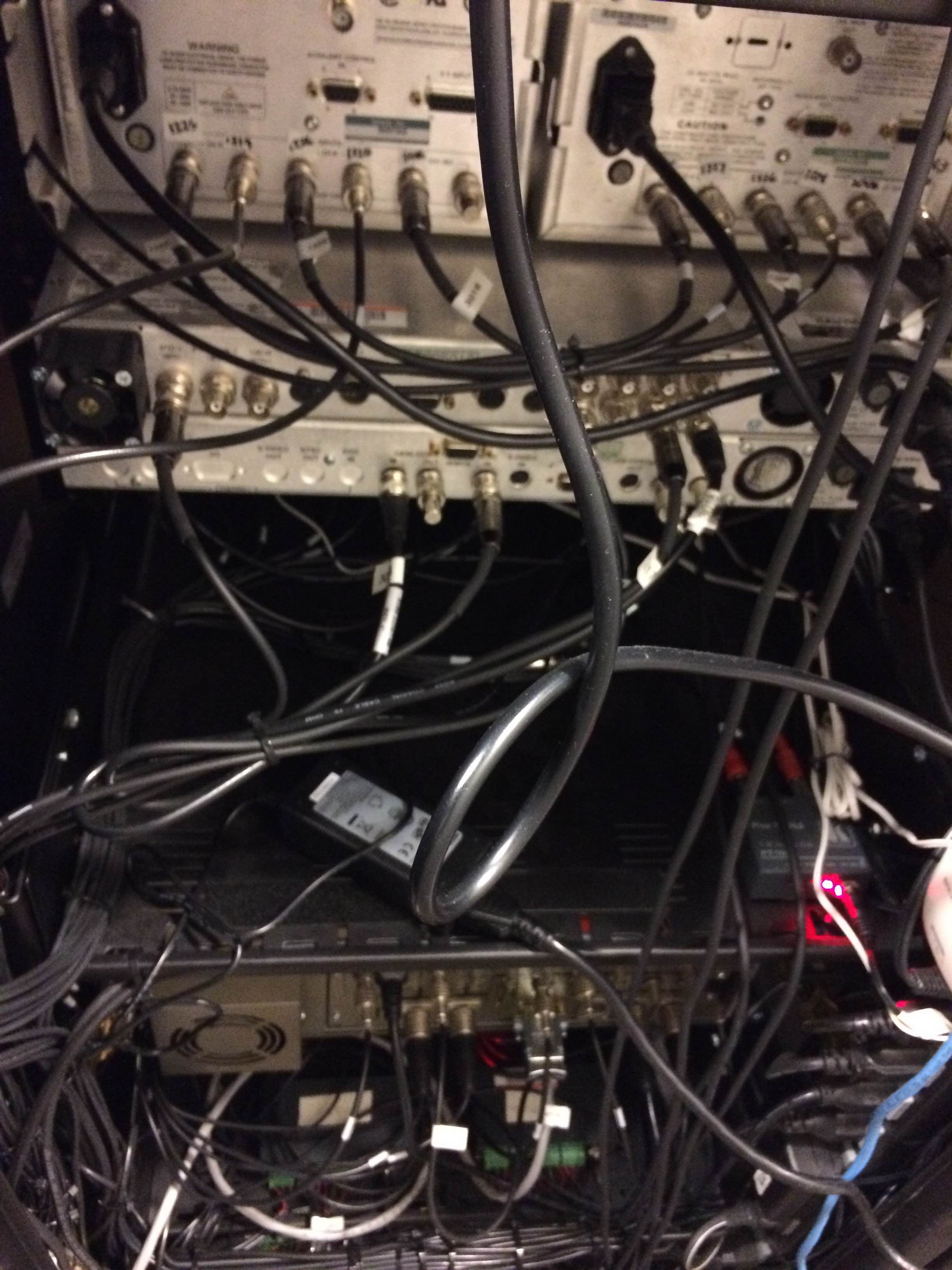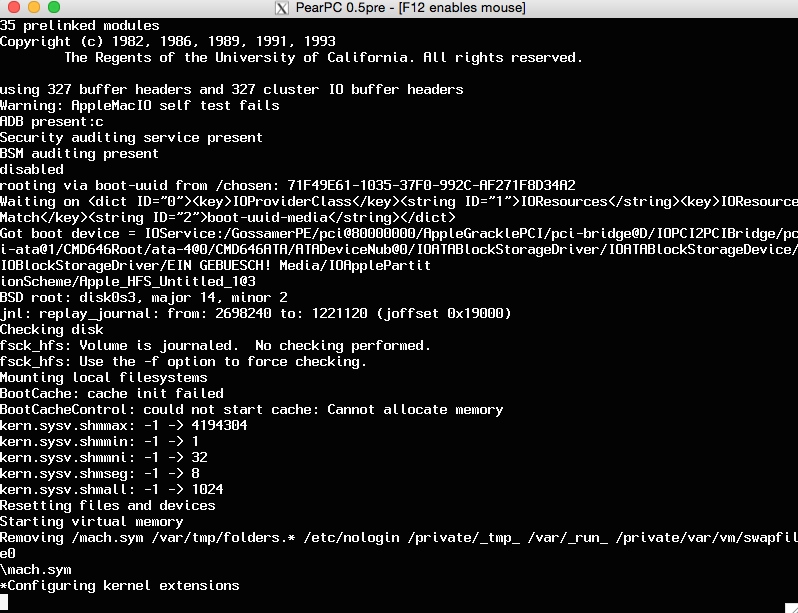Under the Hood
It's a common theme in moving image archiving and preservation that we are always running out of time. Tapes shed, files corrupt, bits rot, film reels turn into whatever the hell this monstrosity is (image credit: David Neary). Our job as archivists is a never-ending struggle against fundamental and inexorable forces that will, eeeeeeever so slowly (or, really, not so slowly), pummel the materials we have been charged with protecting for future generations into fine-grained, slightly dank dust.
It has also become something of an open secret lately that the problem of time is not just an issue for audiovisual objects themselves. The legacy equipment necessary to archive A/V content (whether to play back the original material for identification, or to reformat to a digital format for preservation and access) is also becoming increasingly rare, as manufacturers have long since moved past analog technology. You can stockpile as many 3/4" U-matic tapes as you want in perfect, climate-controlled storage, but if all of a sudden your Sony BVU-950 breaks a gear and the tape transport mechanism refuses to budge, those tapes are now as useless to you as they are to the modern consumer. Maybe you're lucky enough to have another deck lying around that you can cannibalize for that one particular gear - maybe some oblivious sap happens to be selling the 2-cent piece of plastic you need on eBay for $85. Odds are, unless you can find someone who really knows what they're doing with this equipment and has connections to the materials necessary for repair, you're out of commission.

And that in turn leads us to the last item in the Trifecta of Things Archivists Are Really Really Scared to Lose: the people who actually know how to maintain and fix legacy equipment. Technicians who know how to properly calibrate an audio cassette deck are getting fewer and farther between, not to mention far more rare and specialized tech like a 2-inch Quad machine or an obscure Time Base Corrector. In fact this pool of collective knowledge might be getting even smaller than we think, and without them other archivists, even those who know how to use this stuff, are going to be increasingly grappling in the dark when it comes to peeking under the hood.
I was slightly sensitive about this when I was hired last fall as the technician for NYU's Moving Image Archiving and Preservation program. I am not one of those few industry veterans hanging around with expert opinions and decades of hands-on experience; I have never soldered a circuit board or clipped cables for a terminal block. Thanks to graduating from this program myself, I have a broad familiarity with a very wide range of A/V preservation technology, from 16mm film projectors to the latest disk imaging software, but the idea of maintaining all of the legacy and contemporary media equipment owned by our department and used in our curriculum is daunting, particularly when faced with that dwindling community of possible support.
On the other hand, the first few months of the job have given me hope that we may, at least ever so slightly, be overstating the extent of the crisis (it is, after all, a bit of a habit in the preservation field to hyperbolize - it tends to help when trying to get someone to give us money to do our jobs). Yes, the number of expert A/V technicians out there is getting smaller - but, if we do this right (and by "this" I mean archival education and professional training), so is the number of archivists with no tech ability at all. And that is no small thing, because I now firmly believe that a great deal can be accomplished and learned by archivists (whether professional or amateur) who are willing to just dive in and get their hands dirty.

Because at the end of the day, "troubleshooting" is a fancy word for "trying stuff and watching what happens." The tech who has been at your institution for 40+ years? He/she (probably he, but that's another conversation) was not born knowing how to adjust the azimuth on a 1/4"-tape recorder. There was no mystical rite of passage involving secret readings from the Gospel of Alexander M. Poniatoff. They read manuals. They pushed a button. They tightened a screw, then pushed the button again. They went back to the manual. Then they pushed a different button. And on and on and on, until it worked.
I want to demystify the technical side of preservation, whether it's working with analog or digital equipment. I want to be more transparent about the things I'm trying, even (especially!) the efforts that don't work. I want to be able to ask others what they've tried, and why. I want my peers in the field, and our students here at NYU, to be unafraid to lift up the hood.

So that's why I've started The Patch Bay. If all goes to plan, I'll be posting what and when I can about my projects here in NYU-MIAP - about equipment and tech requests I get from our students and faculty, and what I do, step-by-step, based on my resources and abilities, to fulfill those requests. Maybe I'll throw a problem out there to the wider community, when I come across a total stumper. I hope, if I can, to write and illustrate my posts in a way that's accessible to professionals, students of moving image archiving, and maybe even interested layfolk. If you have any questions about my processes, please don't hesitate to get in contact - in the end, it's all just about trying to make connections.
